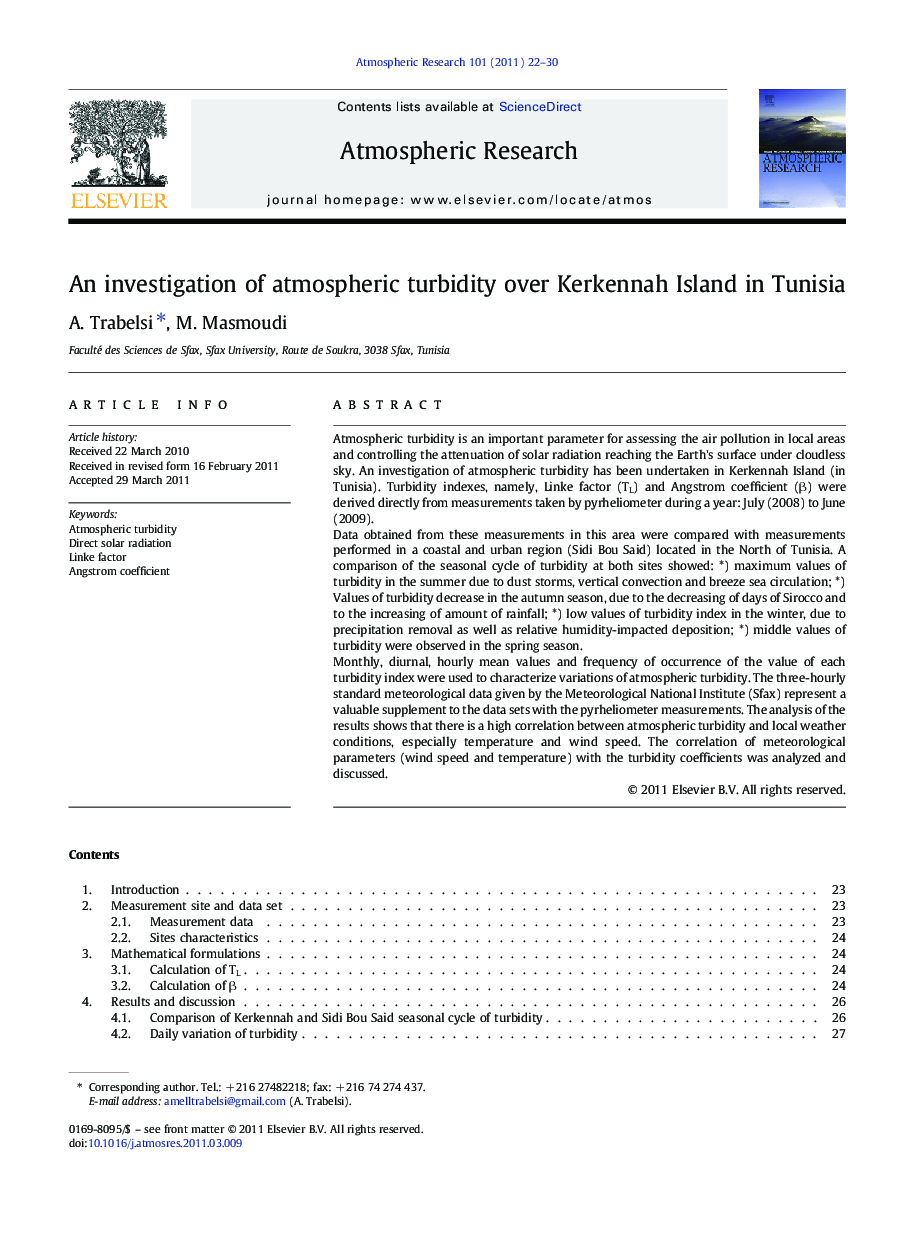| Article ID | Journal | Published Year | Pages | File Type |
|---|---|---|---|---|
| 4450424 | Atmospheric Research | 2011 | 9 Pages |
Atmospheric turbidity is an important parameter for assessing the air pollution in local areas and controlling the attenuation of solar radiation reaching the Earth's surface under cloudless sky. An investigation of atmospheric turbidity has been undertaken in Kerkennah Island (in Tunisia). Turbidity indexes, namely, Linke factor (TL) and Angstrom coefficient (β) were derived directly from measurements taken by pyrheliometer during a year: July (2008) to June (2009).Data obtained from these measurements in this area were compared with measurements performed in a coastal and urban region (Sidi Bou Said) located in the North of Tunisia. A comparison of the seasonal cycle of turbidity at both sites showed: *) maximum values of turbidity in the summer due to dust storms, vertical convection and breeze sea circulation; *) Values of turbidity decrease in the autumn season, due to the decreasing of days of Sirocco and to the increasing of amount of rainfall; *) low values of turbidity index in the winter, due to precipitation removal as well as relative humidity-impacted deposition; *) middle values of turbidity were observed in the spring season.Monthly, diurnal, hourly mean values and frequency of occurrence of the value of each turbidity index were used to characterize variations of atmospheric turbidity. The three-hourly standard meteorological data given by the Meteorological National Institute (Sfax) represent a valuable supplement to the data sets with the pyrheliometer measurements. The analysis of the results shows that there is a high correlation between atmospheric turbidity and local weather conditions, especially temperature and wind speed. The correlation of meteorological parameters (wind speed and temperature) with the turbidity coefficients was analyzed and discussed.
Research Highlights► In this study we compare the seasonal cycle of turbidity over Kerkennah and Sidi Bou. ► We study the daily variation of turbidity over both sites. ► We find frequency distribution of the turbidity indexes. ► We examine the turbidity with the meteorological parameters. ► In this study we conclude that the turbidity increase in the afternoon and it is higher in Sidi Bou Said than that in Kerkennah island.
